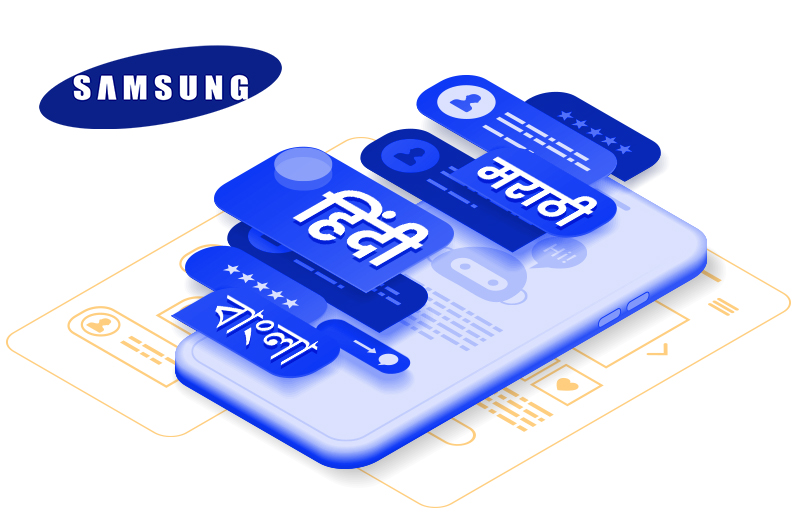The Creative Ask
India is home to 600+ million Internet users and growing, with 40 million users coming online for the very first time, year on year. Most of these new internet users are from geographies where languages other than English reign supreme. Large phone manufacturers like Samsung are accelerating the adoption rate of mobile telephony amongst native language users by customizing the User Experience and reimagining the mobile interface for these regional users.
About Samsung
Samsung is the world’s largest manufacturer of smartphones since 2011. They are also the highest-selling brand of mobile phones in India.
The Agrahyah Response
Our expertise was brought in to prevent design inconsistencies from creating friction in the user experience. We were to create a globally consistent,on-brand, seamless, and improved user journey across the suite of first-party Samsung apps such as the dialer, messages, camera, settings, etc.
In consultation with Samsung designers, we created a holistic design system containing a universal set of guidelines for the Samsung Design Team to follow while implementing vernacular content across touchpoints.
Our strategy and recommendations were guided by user research, UX inputs, and linguistic expert inputs in order to create a standard set of best practices covering:
- Language usage
- Content Length and Depth
- Samsung Brand Tone and Voice
- Component Guidelines
What Did We Do ?
- We began by conducting qualitative audience research and interviews. We supplemented our foundational efforts by conducting in depth competitor feature set analysis, to identify existing need gaps and pain points in the vernacular content experience.
- We then plotted the product journey with Hindi, Bengali, and Marathi users in mind. We created a globally-shared document laying out the principles to treat text, accompanying imagery, points of insertion, messaging intent, and placement.
Project Scope
For this project, Samsung worked with Agrahyah to create a centralized UX best practices, workflow, and guiding system. The aim was to align the activities of multiple divisions of Samsung’s global design & product teams working across geographies to create a consistent localized experience for Indic language users.
In particular, Samsung was looking for a consultant to come on board and create a single source of truth for the localization process to create a seamless user experience for Hindi, Bengali, and Marathi users.


